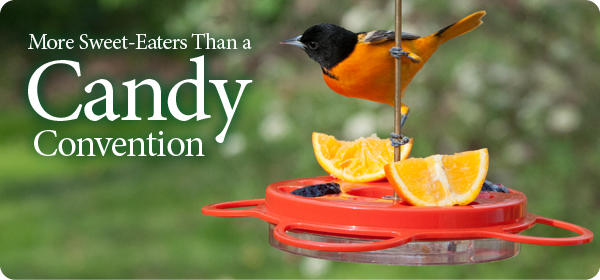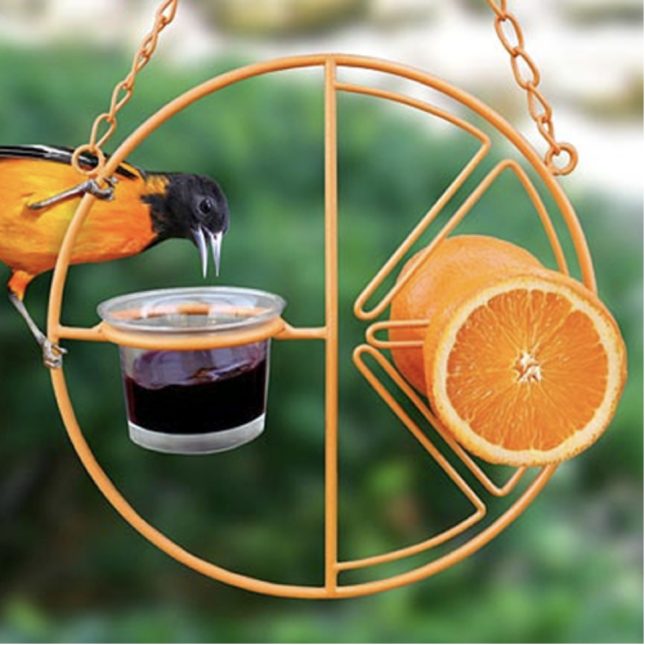
Oh! Things to Know About Orioles
One of North America’s most popular fruit-eating birds is the Baltimore Oriole and we can help you attract them to your yard. A few Baltimore Orioles are already starting to be reported in North Central Texas with more expected during migration in the month of September.
Orioles do nest in the Dallas area, particularly in park-like settings near water. There were several pairs nesting around White Rock Lake this year but most of the Orioles we observe are at mulberry trees and water features during spring migration and then at water features and oriole feeders in fall migration (mid-August through mid-October).
Get ready with one of our oriole feeders. We have several oriole feeders available and the one we’re most excited about is this new design, pictured below. It's simple to use, easy to clean, and great looking too. You'll be able to see the Orioles from all views while they feed.
Orioles are known to enjoy orange slices and grape jelly (no jam!). Be patient and keep the foods fresh, replacing them every few days and be sure to keep your feeders clean, too. The nice thing about an oriole feeder is that you put it out for migration but you don’t need to keep it out the whole summer. Less cleaning and upkeep!
Oriole Fun Facts
- When not feeding on nectar, orioles seek out caterpillars, fruits, insects, and spiders.
- The oriole nest is an engineering masterpiece. They weave a hanging basket nest with plant fibers, grasses, vine, and tree bark and sometimes string or yarn placed out on the small twigs of a branch 6-45 feet in the air. This keeps them safe from most predators.
- The Baltimore Oriole is a common inhabitant of suburban landscapes due to its preference for open settings that are bordered by mature trees.
- Orioles are a member of the Icteridae family, meaning that their closest bird relatives include meadowlarks, blackbirds, bobolinks, and grackles.
- The oriole gets its name from the Latin aureolus, which means golden.
- While male Baltimores sport the flashy colors the species is known for, females range from olive-brown on their heads to yellow-orange toward their bellies. Young Baltimore males, on the other hand, don’t achieve their Halloween look until they become about a year old. From that point on, though, their orange feathers grow deeper and more distinct.
- Baltimore Orioles are truly attracted to the color orange, which is why getting an orange oriole feeder will increase your chances of attracting these beautiful birds to your yard.

Our new oriole feeder. This feeder, along with others, is available in-store. Get ready!

